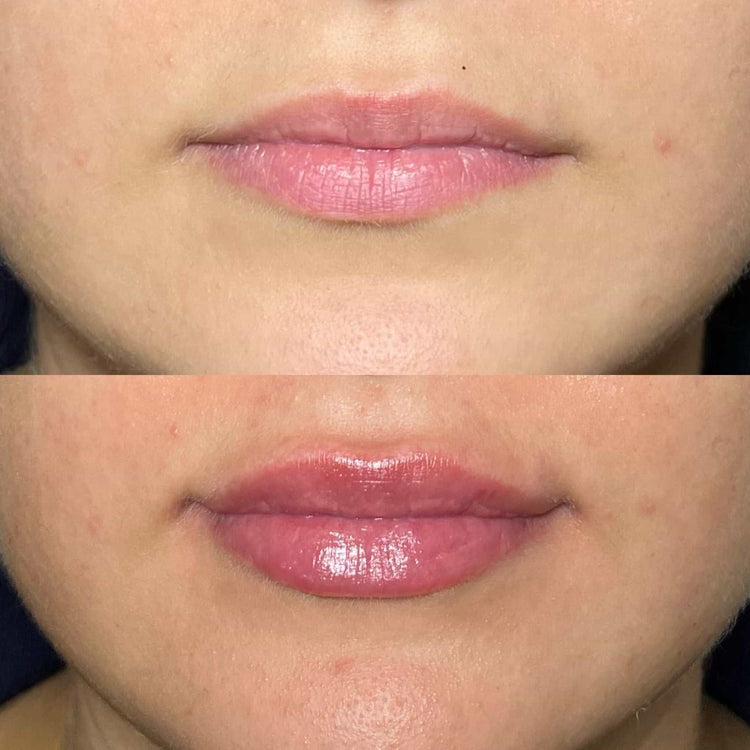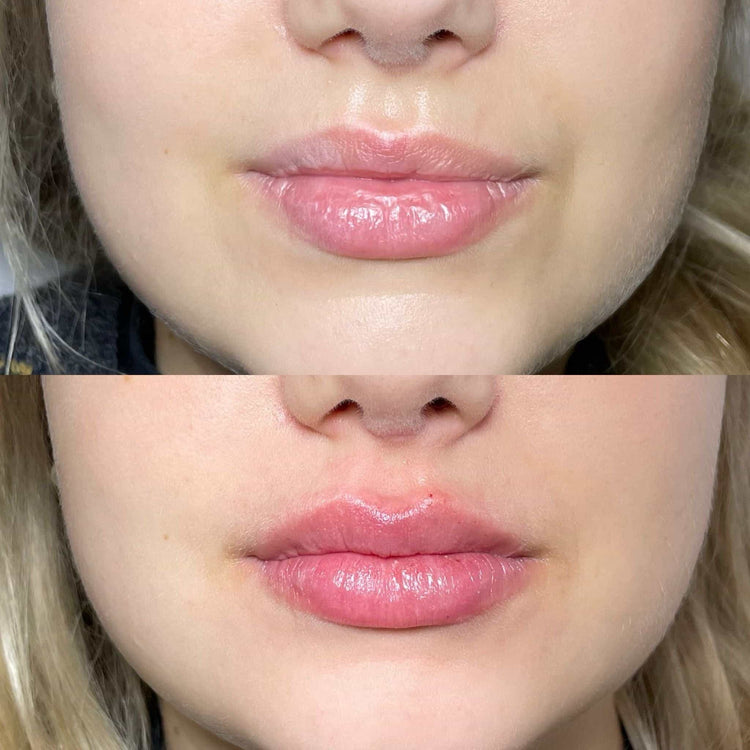Factors Affecting Top-Up Frequency
Determining how frequently to top up lip filler can feel overwhelming, as individual needs vary significantly. Many factors influence this decision, from the type and amount of filler used to lifestyle choices and natural lip anatomy. Understanding these contributing elements empowers individuals to make informed choices about their lip enhancement journey.
Lip Size & Volume
Several factors influence the frequency of top-up appointments for lip filler and can also affect lip size and volume. The type of dermal filler used plays a significant role, with hyaluronic acid fillers typically lasting 6 to 18 months, while longer-lasting options like polylactic acid (PLA) can provide results for up to two years. The amount of filler initially injected also impacts longevity; larger volumes tend to disperse more gradually.
Lifestyle factors like smoking, sun exposure, and facial expressions contribute to filler breakdown. Smoking constricts blood vessels, reducing nutrient supply to the lips and accelerating filler degradation. Sun exposure damages collagen and elastin, affecting lip volume and structure. Frequent facial expressions also cause repetitive motion, leading to faster filler dispersal.
Individual lip anatomy plays a crucial role in determining how long lip filler lasts. Individuals with thin lips or naturally mobile lips may need more frequent top-ups compared to those with fuller, more static lips. Factors like skin thickness and metabolism can also influence the longevity of results.
Desired Lip Appearance
The desired lip appearance is another key factor influencing top-up frequency. Clients seeking subtle enhancements might opt for longer intervals between appointments, while those desiring a bolder look may prefer more frequent top-ups to maintain their desired volume and shape.

Ultimately, a comprehensive consultation with a qualified practitioner is essential for determining the optimal top-up schedule tailored to individual needs and aesthetic goals.
Individual Metabolism
Several factors influence how long lip filler lasts and the frequency of needed top-ups. The type of filler used significantly impacts longevity, with hyaluronic acid fillers typically lasting 6 to 18 months, while options like polylactic acid (PLA) can provide results for up to two years. The amount of filler injected also plays a role; larger volumes tend to disperse more gradually.
Lifestyle choices can affect filler breakdown. Smoking constricts blood vessels, reducing nutrient supply to the lips and accelerating degradation. Sun exposure damages collagen and elastin, impacting lip volume and structure. Frequent facial expressions cause repetitive motion, leading to faster filler dispersal.
Individual lip anatomy is also crucial. Those with thin or naturally mobile lips may need more frequent top-ups compared to those with fuller, more static lips. Skin thickness and metabolism can also influence how long results last.
Desired aesthetics play a role too. Clients seeking subtle enhancements might opt for longer intervals between appointments, while those desiring a bolder look may prefer more frequent top-ups to maintain their desired volume and shape.
Lifestyle Factors
Several lifestyle factors can influence how long lip filler lasts and the frequency of needed top-ups. Smoking is detrimental to lip fillers as it constricts blood vessels, reducing nutrient supply to the lips and accelerating filler degradation. Sun exposure also damages collagen and elastin, affecting lip volume and structure over time. Frequent facial expressions contribute to faster filler dispersal due to repetitive motion.
The natural characteristics of an individual’s lips also play a role in how long the results last. Those with thin lips or naturally mobile lips may find that they require more frequent top-up appointments compared to individuals with fuller, more static lips. Skin thickness and metabolic rate can also influence the longevity of lip filler.
Average Top-Up Schedule
Determining the ideal frequency for lip filler top-ups can be complex due to the multitude of factors involved.
Initial Touch-up
Determining how frequently to top up lip filler can feel overwhelming, as individual needs vary significantly. Many factors influence this decision, from the type and amount of filler used to lifestyle choices and natural lip anatomy.
Several factors influence the frequency of top-up appointments for lip filler and can also affect lip size and volume. The type of dermal filler used plays a significant role, with hyaluronic acid fillers typically lasting 6 to 18 months, while longer-lasting options like polylactic acid (PLA) can provide results for up to two years. The amount of filler initially injected also impacts longevity; larger volumes tend to disperse more gradually.
- Lifestyle Factors: Smoking, sun exposure, and facial expressions contribute to filler breakdown.
- Lip Anatomy: Individuals with thin lips or naturally mobile lips may need more frequent top-ups compared to those with fuller, more static lips.
- Desired Aesthetics: Clients seeking subtle enhancements might opt for longer intervals between appointments, while those desiring a bolder look may prefer more frequent top-ups
Ultimately, a comprehensive consultation with a qualified practitioner is essential for determining the optimal top-up schedule tailored to individual needs and aesthetic goals.
Maintenance Fillers
Determining how frequently to top up lip filler can feel overwhelming as individual needs vary significantly. Many factors influence this decision, from the type and amount of filler used to lifestyle choices and natural lip anatomy. Understanding these contributing elements empowers individuals to make informed choices about their lip enhancement journey.
Several factors influence the frequency of top-up appointments for lip filler and can also affect lip size and volume. The type of dermal filler used plays a significant role, with hyaluronic acid fillers typically lasting 6 to 18 months, while longer-lasting options like polylactic acid (PLA) can provide results for up to two years. The amount of filler initially injected also impacts longevity; larger volumes tend to disperse more gradually.
Lifestyle factors like smoking, sun exposure, and facial expressions contribute to filler breakdown. Smoking constricts blood vessels, reducing nutrient supply to the lips and accelerating filler degradation. Sun exposure damages collagen and elastin, affecting lip volume and structure. Frequent facial expressions also cause repetitive motion, leading to faster filler dispersal.
Individual lip anatomy plays a crucial role in determining how long lip filler lasts. Individuals with thin lips or naturally mobile lips may need more frequent top-ups compared to those with fuller, more static lips. Factors like skin thickness and metabolism can also influence the longevity of results.
The desired lip appearance is another key factor influencing top-up frequency. Clients seeking subtle enhancements might opt for longer intervals between appointments, while those desiring a bolder look may prefer more frequent top-ups to maintain their desired volume and shape.
Ultimately, a comprehensive consultation with a qualified practitioner is essential for determining the optimal top-up schedule tailored to individual needs and aesthetic goals.
Signs You Need a Top-Up
Determining how often to get lip filler topped up can feel overwhelming. Individual needs vary significantly, influenced by factors like the type and amount of filler used, lifestyle choices, and natural lip anatomy. Understanding these elements empowers you to make informed decisions about your lip enhancement journey.
Loss of Definition
Loss of definition in lip filler can be a sign that it’s time for a top-up.
As hyaluronic acid fillers break down over time, they gradually lose their ability to hold volume and create well-defined contours. This can result in a less plump appearance and blurred edges.
Flattening of Lips
Loss of definition in lip filler can be a sign that it’s time for a top-up. As hyaluronic acid fillers break down over time, they gradually lose their ability to hold volume and create well-defined contours. This can result in a less plump appearance and blurred edges.
Flattening of the lips is another telltale sign. As filler diminishes, the lips may appear flatter and less voluminous overall.
Asymmetry
Loss of definition in lip filler can be a sign that it’s time for a top-up. As hyaluronic acid fillers break down over time, they gradually lose their ability to hold volume and create well-defined contours. This can result in a less plump appearance and blurred edges.
Flattening of the lips is another telltale sign. As filler diminishes, the lips may appear flatter and less voluminous overall.
If you notice these signs, it might be time to schedule a consultation with your provider to discuss top-up options.
Maximizing Filler Longevity
Maximizing the longevity of lip filler requires understanding various factors that influence its breakdown and persistence.
Hydration & Skincare Routine
Maximizing the longevity of lip filler requires understanding various factors that influence its breakdown and persistence.
Several lifestyle factors can significantly impact how long your lip filler lasts. Smoking constricts blood vessels, reducing nutrient supply to the lips and accelerating filler degradation. Sun exposure damages collagen and elastin, affecting lip volume and structure over time. Frequent facial expressions contribute to faster filler dispersal due to repetitive motion.
Individual anatomy also plays a role. Those with thin lips or naturally mobile lips may find that they require more frequent top-up appointments compared to individuals with fuller, more static lips. Skin thickness and metabolic rate can also influence how long lip filler lasts.
The type and amount of filler used are crucial factors. Hyaluronic acid fillers typically last 6 to 18 months, while longer-lasting options like polylactic acid (PLA) can provide results for up to two years. Larger volumes tend to disperse more gradually.
To maximize your lip filler’s lifespan and maintain your desired look, it is important to consult with a qualified practitioner. They can recommend the best type of filler based on your individual needs and goals, advise you on lifestyle modifications to protect your results, and establish an appropriate top-up schedule.
Sun Protection
Maximizing the longevity of lip filler involves understanding factors that influence its breakdown and persistence.
Several lifestyle factors can significantly impact how long lip filler lasts. Smoking constricts blood vessels, reducing nutrient supply to the lips and accelerating filler degradation. Sun exposure damages collagen and elastin, affecting lip volume and structure over time. Frequent facial expressions contribute to faster filler dispersal due to repetitive motion.
Individual anatomy also plays a role. Those with thin lips or naturally mobile lips may find that they require more frequent top-up appointments compared to individuals with fuller, more static lips. Skin thickness and metabolic rate can also influence how long lip filler lasts.
The type and amount of filler used are crucial factors. Hyaluronic acid fillers typically last 6 to 18 months, while longer-lasting options like polylactic acid (PLA) can provide results for up to two years. Larger volumes tend to disperse more gradually.

To maximize your lip filler’s lifespan and maintain your desired look, consult with a qualified practitioner. They can recommend the best type of filler based on your individual needs and goals, advise you on lifestyle modifications to protect your results, and establish an appropriate top-up schedule.
Sun protection is crucial for maintaining lip filler longevity.
The sun’s ultraviolet (UV) rays break down collagen and elastin, the proteins responsible for skin’s firmness and structure. This breakdown can cause premature aging and affect the volume and definition of your lip fillers.
Always wear a broad-spectrum sunscreen with an SPF of 30 or higher, even on cloudy days. Reapply every two hours, especially after sweating or swimming. You may also want to consider using lip balm with SPF for added protection.
Avoidance of Certain Habits
Maximizing the longevity of lip filler involves understanding factors that influence its breakdown and persistence.
Several lifestyle factors can significantly impact how long lip filler lasts. Smoking constricts blood vessels, reducing nutrient supply to the lips and accelerating filler degradation. Sun exposure damages collagen and elastin, affecting lip volume and structure over time. Frequent facial expressions contribute to faster filler dispersal due to repetitive motion.
Individual anatomy also plays a role. Those with thin lips or naturally mobile lips may find that they require more frequent top-up appointments compared to individuals with fuller, more static lips. Skin thickness and metabolic rate can also influence how long lip filler lasts.
The type and amount of filler used are crucial factors. Hyaluronic acid fillers typically last 6 to 18 months, while longer-lasting options like polylactic acid (PLA) can provide results for up to two years. Larger volumes tend to disperse more gradually.
To maximize your lip filler’s lifespan and maintain your desired look, consult with a qualified practitioner. They can recommend the best type of filler based on your individual needs and goals, advise you on lifestyle modifications to protect your results, and establish an appropriate top-up schedule.
Sun protection is crucial for maintaining lip filler longevity.
The sun’s ultraviolet (UV) rays break down collagen and elastin, the proteins responsible for skin’s firmness and structure. This breakdown can cause premature aging and affect the volume and definition of your lip fillers.
Always wear a broad-spectrum sunscreen with an SPF of 30 or higher, even on cloudy days. Reapply every two hours, especially after sweating or swimming. You may also want to consider using lip balm with SPF for added protection.
Cost Considerations for Maintenance
Determining how often to top up lip filler can be overwhelming due to the variety of influencing factors.
These factors include the type and amount of filler used, individual lifestyle choices, and natural lip anatomy. Understanding these elements empowers individuals to make informed decisions about their lip enhancement journey.
Frequency & Volume**
Determining how often to top up lip filler can feel overwhelming, as individual needs vary significantly. Many factors influence this decision, from the type and amount of filler used to lifestyle choices and natural lip anatomy. Understanding these contributing elements empowers individuals to make informed choices about their lip enhancement journey.

Several factors influence the frequency of top-up appointments for lip filler and can also affect lip size and volume. The type of dermal filler used plays a significant role, with hyaluronic acid fillers typically lasting 6 to 18 months, while longer-lasting options like polylactic acid (PLA) can provide results for up to two years. The amount of filler initially injected also impacts longevity; larger volumes tend to disperse more gradually.
Lifestyle factors like smoking, sun exposure, and facial expressions contribute to filler breakdown. Smoking constricts blood vessels, reducing nutrient supply to the lips and accelerating filler degradation. Sun exposure damages collagen and elastin, affecting lip volume and structure. Frequent facial expressions also cause repetitive motion, leading to faster filler dispersal.
Individual lip anatomy plays a crucial role in determining how long lip filler lasts. Individuals with thin lips or naturally mobile lips may need more frequent top-ups compared to those with fuller, more static lips. Factors like skin thickness and metabolism can also influence the longevity of results.
The desired lip appearance is another key factor influencing top-up frequency. Clients seeking subtle enhancements might opt for longer intervals between appointments, while those desiring a bolder look may prefer more frequent top-ups to maintain their desired volume and shape.
Ultimately, a comprehensive consultation with a qualified practitioner is essential for determining the optimal top-up schedule tailored to individual needs and aesthetic goals.
Book a lip enhancement treatment with Dr. Laura Geige at It’s Me & You Clinic
- The Emotional Impact Of Cheating: Physical Vs Emotional Infidelity - June 2, 2025
- Natural-Looking Lip Fillers: Tips And Tricks For UK Clients - June 1, 2025
- What Are The Best CBD Infused Gummies For Overall Wellness - May 31, 2025
